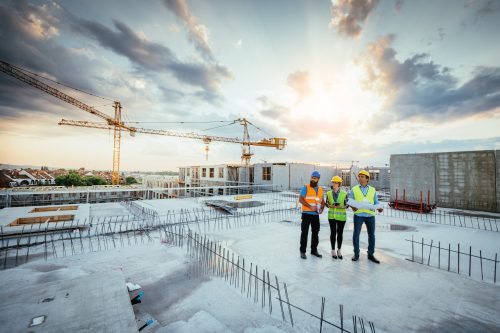 President Biden’s one-trillion-dollar infrastructure received bipartisan support and was signed into law earlier this year. Hundreds of billions of dollars will be invested on the nation’s highways, train lines, bridges, water systems, and electricity grid, resulting in construction, transportation, and energy jobs. Expert employees are in high demand. The acceleration of these large-scale projects, however, implies some underlying hazards for employees, especially with an aging population.
President Biden’s one-trillion-dollar infrastructure received bipartisan support and was signed into law earlier this year. Hundreds of billions of dollars will be invested on the nation’s highways, train lines, bridges, water systems, and electricity grid, resulting in construction, transportation, and energy jobs. Expert employees are in high demand. The acceleration of these large-scale projects, however, implies some underlying hazards for employees, especially with an aging population.
Keep reading to learn why this is such a potential issue. If you have been injured on a construction site, contact The Law Offices of Larry H. Parker at 800-333-0000 for a free legal consultation. Remember that we can help with worker’s compensation claims, too.
Alarming figures about construction site injuries
According to 2019 statistics, someone dies from a work-related accident every 99 minutes in the United States. Construction accidents and diseases account for one in every five workplace fatalities. Construction has a lower fatality rate (per 100,000 employees) than other businesses such as farming, fishing/hunting, forestry, and mining.
According to new data from the HSE (Health and Safety Executive), construction employment has more actual deaths than any other industry. Every day, three construction workers die as a result of their labor. Many experts feel that fatal workplace injuries go unreported.
These injuries are more common than in recent years
Furthermore, such mishaps are becoming more common. According to a 2019 CPRW research, on-site accident mortality have reached their greatest level in at least nine years, with about 1,100 fatalities in 2019, up 41% from 2011 and up 5.3 percent from the previous year alone.
The “Construction Focus Four,” sometimes known as the Fatal Four, are the biggest dangers to construction workers, according to OSHA, the federal government’s Occupational Safety and Health Administration: falls, by-passes, electrocution, and excavation.
These four types of accidents accounted for 709 of the more than 1000 deaths on construction sites in 2019. That represents more than 60% of the industry’s fatalities in that year. There are, of course, other dangers, such as fires, explosions, and exposure to hazardous substances or situations.
Alarmingly, the data reveals disproportionate casualties among some ethnicities, like as Hispanic workers, who witnessed a 55% percent increase in construction employment but an 89.8% increase in fatal injuries between 2011 and 2019. Older workers were also more vulnerable. Construction workers aged 65 and over had the highest rate of death, more than double that of the next younger age group, 45-64.
However, fatalities are only one aspect of the story
According to the U.S. Bureau of Labor Statistics’ Survey of Occupational Injuries and Illnesses Data and the Census of Fatal Occupational Injuries, construction workers suffered over 200,000 nonfatal injuries in 2019.
Scarring, deformity, back/neck/spinal cord damage, blindness or deafness, severe brain injury, amputated limbs, burns, fractures, paralysis, and other conditions can be among them. Though current data suggests a minor decrease in construction accidents in 2020 and 2021, these figures are likely biased by the Covid-19 crisis’ layoffs, furloughs, and halted projects.
Despite this, 1.7 percent of all construction employees will be injured seriously enough to leave work in 2020. Even more disappointing, many fatal construction incidents are avoidable. On-site disasters result in serious accidents, injuries, illnesses, and deaths, which not only highlight the substantial risks that workers in this area face, but also suggest unsafe working conditions.
Call today if you have been injured in a construction site accident
If you have been injured in this type of accident, contact The Law Offices of Larry H. Parker at 800-333-0000 now for a free legal consultation. We will take the time to understand your specific situation and provide the best legal advice possible.



